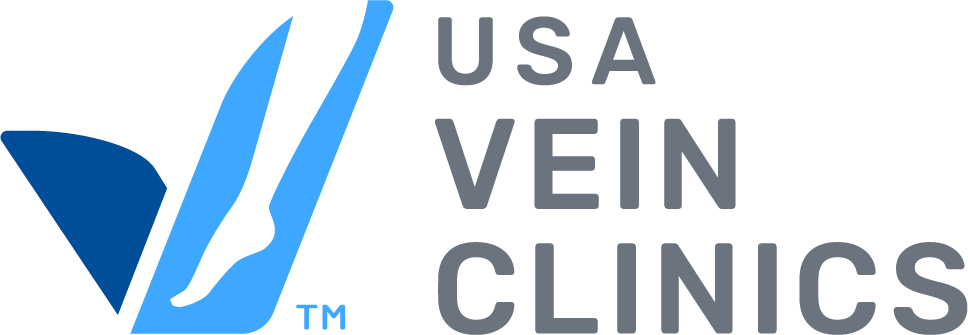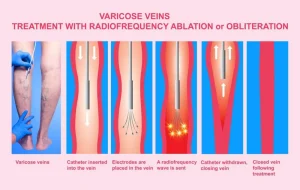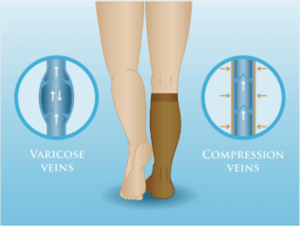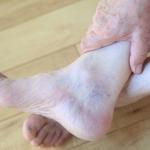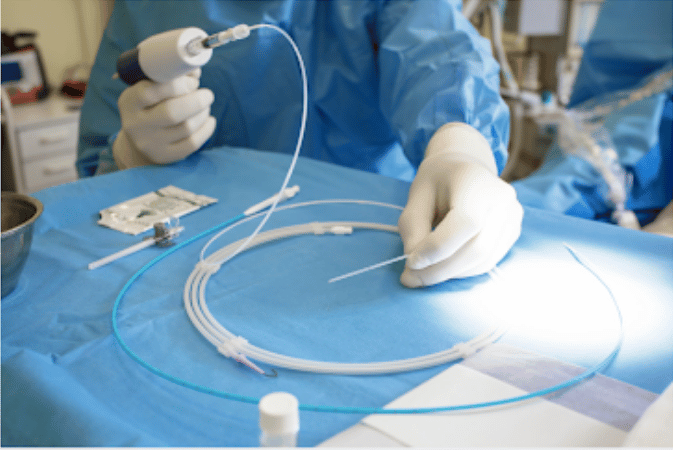
Leg vein ablation is a minimally invasive procedure used to treat varicose veins. It’s considered safe and highly effective.¹ However, since it involves using heat energy or a medical irritant to close off diseased veins, many patients are concerned about the potential for pain during and after the procedure.
The doctor performing the procedure uses a local anesthetic to ensure that vein ablation is pain-free, though some mild discomfort can occur afterward.
Let’s examine how the vein ablation procedure works and what happens post-treatment so you know what to expect from this varicose vein treatment.
What Is Leg Vein Ablation?
When the tiny valves in leg veins become weakened or damaged, they can’t effectively pump blood back to the heart, causing it to pool. Vein ablation treats these damaged veins by sealing them with heat energy, laser energy, or a chemical solution. Once the damaged vein closes, blood flows to healthy veins, supporting better circulation and leading to symptom relief.
There are three main types of leg vein ablation for varicose veins: Endovenous laser treatment (EVLT), radiofrequency ablation (RFA), and ultrasound-guided sclerotherapy.
- EVLT uses laser energy to seal damaged veins. It’s also known as endovenous laser ablation (EVLA), and sometimes written as endovenous laser vein ablation.
- Radiofrequency Ablation (RFA) uses energy from radio waves instead of laser heat to close damaged veins, but it works the same way as EVLT.
- Ultrasound-guided sclerotherapy uses a chemical solution to collapse problem veins.
EVLT, RFA, and sclerotherapy are all guided by ultrasound technology. They are minimally invasive alternatives to vein surgery.
Is the Vein Ablation Procedure Painful?
Vein ablation isn’t considered painful. Before the procedure, the doctor administers a local anesthetic to the area where the tiny needle will be inserted. This numbs the area, so the patient feels little discomfort.
Vein Ablation Procedure: Step-by-Step
The following is an overview of vein ablation using laser energy.
Before starting the vein ablation procedure, a vein specialist uses ultrasound imaging to identify the problem veins. Once the damaged veins are marked, the doctor can begin the procedure with the following steps:
- A local anesthetic is administered to the area being treated so the patient won’t feel any discomfort.
- The doctor then inserts a needle into the damaged vein, followed by a tiny wire that is moved up the vein.
- The needle is removed, and a catheter, a thin plastic tube, is placed over the wire. Then, the wire is removed.
- During endovenous laser treatment, the doctor inserts a laser fiber within the catheter. Once inserted, the laser is turned on to heat the varicose vein walls while slowly removing the wire. Radiofrequency ablation for varicose veins follows the same process, except radio waves are used as the heat source instead of laser energy.
- The heat energy from the laser collapses the vein, causing it to seal shut and form scar tissue to create a permanent closure. This takes about 20 to 30 minutes for each leg.
For ultrasound-guided sclerotherapy, the doctor injects a chemical solution instead of a laser fiber. The solution is called a sclerosant, and its purpose is to irritate the vein walls, causing them to collapse and close the vein.
Immediately after vein ablation, blood reroutes and starts flowing through healthy veins.
Over time, the treated veins disappear as the body safely reabsorbs the tissue.
Who Is a Good Candidate for Vein Ablation?
Vein ablation is considered a safe and effective treatment for varicose veins. Laser ablation has some risks, including skin burns, discoloration, and nerve damage, but these are rare occurrences. It offers lasting results from painful symptoms, including aching pain, swelling, and skin ulcers. It also reduces the appearance of raised, bulging, and twisted leg veins.
Anyone suffering from vein symptoms should see a vein specialist to determine if they are a good candidate for leg vein ablation. It’s important to note that laser ablation is not recommended for people with serious obstructions in their venous system and women who are pregnant or breastfeeding.
Visit a USA Vein Clinic to have a vein specialist evaluate your veins and determine the best vein treatment for your unique needs.
Recovery After Vein Ablation
Leg vein ablation is an outpatient procedure with a short recovery. This means patients do not need to stay overnight in the hospital and can go home immediately after their treatment. It’s also okay to go back to work, whether you undergo endovenous laser treatment, radiofrequency ablation, or sclerotherapy for varicose veins.
After the procedure, your doctor may wrap your legs in compression bandages. These help to encourage healthy blood circulation.
While you can return to your normal activity level immediately, you should avoid strenuous activity such as weight lifting, jogging, and bike riding for at least two weeks or until your doctor says it’s okay.
Tips for Alleviating Vein Ablation Side Effects
After the procedure, some people experience pain, tenderness, burning, tightness, or bruising. These post-treatment symptoms generally disappear within a few days, with most people feeling better one week after the procedure.²
There are ways to reduce pain and discomfort after leg vein ablation:
- Wear compression stockings. Studies show that compression therapy for the first two days can help reduce post-treatment swelling or pain.³
- Take over-the-counter pain medications as needed.
- Walking for 10 to 15 minutes every two hours after the procedure is also important to promote faster healing and improve circulation.
Learn More About How Vein Ablation Can Help
If you suffer from varicose veins, vein ablation may help relieve your symptoms. At USA Vein Clinics, our experienced vein specialists focus on treating the root cause of varicose veins. They can discuss your treatment options and create a plan to help you get relief.
Schedule a consultation at a vein clinic near you today. With more than 160 clinic locations nationwide, you can enjoy the convenience of care close to home.
Give us a call at 888.768.3467 or schedule a consultation online.
Schedule Your Appointment Online
Frequently Asked Questions About Varicose Vein Ablation
How effective is varicose vein ablation?
All types of leg vein ablations are highly effective at treating varicose veins and relieving vein symptoms, including swelling, throbbing leg pain, and skin changes caused by damaged veins. The results can be long-lasting, with varying results for individuals. One study shows that most endovenous laser treatment patients experience relief 12 years post-treatment.²
What are the alternatives to endovenous laser treatment?
Radiofrequency ablation (RFA) and ultrasound-guided sclerotherapy are alternatives to endovenous laser treatment. At USA Vein Clinics, we also offer other minimally invasive vein treatments, including VenaSeal™ and Varithena Vein treatment.
How does EVLT compare to ultrasound-guided sclerotherapy for varicose veins?
Laser vein ablation treatment is generally a good option for large varicose veins, and ultrasound-guided sclerotherapy works well for small to medium varicose veins.
Can I return to work immediately after vein ablation?
Yes, you can return to work right away. There’s no need to schedule downtime or to take time off work.
Will my insurance cover vein ablation?
Most insurance generally covers treatment for varicose veins, including vein ablation.
MORE QUESTIONS? TALK TO A VEIN SPECIALIST TODAY
Sources
- Mohammadi Tofigh, A., Tahmasebi, H., & Zebarjadi, J. (2020). Comparing the Success Rate and Side Effects of Endovenous Laser Ablation and Radiofrequency Ablation to Treat Varicose Veins in the Lower Limbs: A Randomized Clinical Trial. Journal of lasers in medical sciences, 11(Suppl 1), S43–S48.
- Julien Al Shakarchi, Michael Wall, Jeremy Newman, Rajiv Pathak, Atiq Rehman, Andrew Garnham, and Simon Hobbs, “The role of compression after endovenous ablation of varicose veins,” Journal of Vascular Surgery: Venous and Lymphatic Disorders 6 no. 4 (2018): 546–550.
- Hossein Ghanaati, Amir Hossein Jalali, Madjid Shakiba, Diana Zarei, Nafiseh Ghavami, & Kavous Firouznia, “Long-term clinical and imaging findings in patients with lower extremity varicose veins treated with endovenous laser treatment: A follow-up study of up to 12 years,” International Journal of Vascular Medicine 2024 no. 1 (2024).
